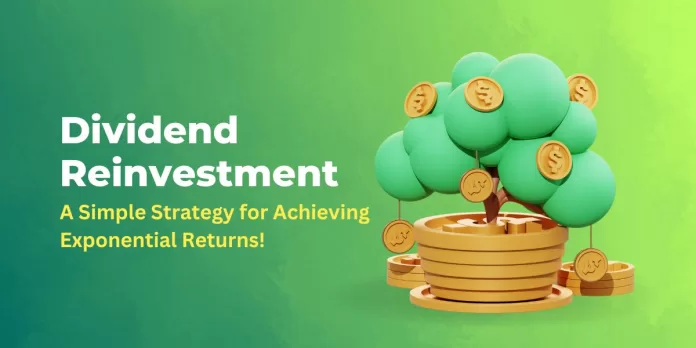Dividend reinvestment plans are a simple yet powerful tool that can significantly enhance your investment returns over time. By automatically reinvesting your dividends into additional shares of stock, you harness the power of compounding, allowing your investment to grow exponentially. As you acquire more shares, your dividend payments increase, fuelling a virtuous cycle of growth. Dividend reinvestment offer several advantages, including reduced transaction fees, convenience, and disciplined investment habits. Whether you’re a seasoned investor or just starting out, incorporating Dividend reinvestments into your investment strategy can make a substantial difference in achieving your long-term financial goals.
The Power of Dividend Reinvestment
Dividend reinvestment plans are a great way to grow your wealth over time. By automatically reinvesting your dividends into additional shares of stock, you can take advantage of the power of compounding to increase your investment returns.
What is Compounding?
Compounding is the process of earning interest on your interest. When you reinvest your dividends, you are essentially earning interest on your dividends. This can have a significant impact on your returns over time.
Here is the real-time example of Oracle Financial Services with its Reinvestment on Manual basis compared to Cashing out dividend.
Assumptions:
- Initial investment: 1 share
- Dividend reinvestment is done at the stock price on the ex-date.
- Fractional investment is allowed (for better understanding).
All values are in Rs.
| Ex-Date | Dividend Amount | Stock Price | Dividends Reinvested | Shares Owned | Cash Out Value | Value with Reinvestment | Value with No Reinvestment |
| 24-Sep-14 | 485 | 3449.7 | 0.14 | 1.14 | 485 | 3934.70 | 3934.7 |
| 03-Sep-15 | 180 | 3917.6 | 0.05 | 1.19 | 665 | 4648.38 | 4097.6 |
| 30-Aug-16 | 100 | 3477.15 | 0.03 | 1.22 | 765 | 4225.77 | 3577.15 |
| 19-Apr-17 | 170 | 3556.6 | 0.05 | 1.26 | 935 | 4492.33 | 3726.6 |
| 06-Aug-18 | 130 | 3909.35 | 0.03 | 1.30 | 1065 | 5067.88 | 4039.35 |
| 19-May-20 | 180 | 2417.8 | 0.07 | 1.37 | 1245 | 3314.31 | 2597.8 |
| 17-May-21 | 200 | 3520.05 | 0.06 | 1.43 | 1445 | 5025.28 | 3720.05 |
| 13-May-22 | 190 | 3230.7 | 0.06 | 1.49 | 1635 | 4802.20 | 3420.7 |
| 09-May-23 | 225 | 3437.25 | 0.07 | 1.55 | 1860 | 5334.22 | 3662.25 |
Initial Investment (24-Sep-14):
The initial investment is 1 share, and the stock price is Rs 3449.7. Therefore, the initial value is 1 * 3449.7 = Rs 3449.7
Dividend Reinvestment (24-Sep-14 to 09-May-23):
On each ex-date, the dividend is reinvested at the stock price on that date. The “Dividends Reinvested” column shows the portion of the dividend used to buy additional shares.
For example, on 24-Sep-14, the dividend is 485, and with a stock price of Rs 3449.7, the portion reinvested is 485 / 3449.7 = 0.14. This results in 1.14 shares owned after reinvestment.
Read: Strategic Dividend Investing
Shares Owned (24-Sep-14 to 09-May-23):
The “Shares Owned” column shows the cumulative number of shares after each dividend reinvestment.
Value with Reinvestment and Cash Out Value (24-Sep-14 to 09-May-23):
The “Value with Reinvestment” column calculates the total value of the investment at each ex-date, considering the reinvestment of dividends. It is calculated as Shares Owned * Stock Price.
Read: Power Of Reinvestment And Incremental ROCE
The “Cash Out Value” column calculates the total value of the investment if dividends are cashed out on each ex-date. It is calculated as the initial investment plus the sum of cashed-out dividends.
Conclusion:
The “Value with Reinvestment” generally shows a higher value compared to the “Cash Out Value” at each ex-date. This indicates that, under the given assumptions, dividend reinvestment has resulted in better returns over the specified period. The difference is due to the compounding effect of both the stock price growth and the reinvested dividends.
Disclaimer: This blog has been written exclusively for educational purposes. The securities mentioned are only examples and not recommendations. It is based on several secondary sources on the internet and is subject to changes. Please consult an expert before making related decisions.


